The Eglinton Theatre on opening night, April 2, 1936. City of Toronto Archives, Series 881 File 350
In my mind, the Eglinton Theatre is forever associated with mega-hit films, which played for extended periods of time and sometimes several years. Most of them were “hard ticket reserved-seat” shows, requiring patrons to purchase tickets in advance of the date. In the industry, theatres that screened these types of films were referred to as “Roadshow Houses.” The Eglinton was one of them, and by agreement, when such films were screened, no other theatre featured the same film unless it was located 90 miles or more from the Eglinton. This assured the theatre of exclusivity. Films screened between mega-hits were referred to as “Fillers.”
Location of the Eglinton Theatre at 400 Eglinton Avenue West.
One of the best examples of a “hard-ticket” film at the Eglinton was “The Sound of Music,” screened from March 10, 1965 to December 21, 1967. Twentieth Century Fox Studios, the producers of the film, insisted on handling the open night in Toronto. Though they did not own the theatre, they shipped from the United States new projectors, which were encased in bubble-wrap. As well, a new screen was installed to permit the film to be viewed in Todd-AO. Further improvements included new seating and carpeting. The studio also brought in their own staff for opening night, insisting that the Eglinton’s regular staff step aside. Snacks, popcorn and drinks were prepared in advance for the intermission. I remember seeing the “Sound of Music” at the Eglinton in 1965 and was impressed with the theatre and film.
In the months ahead, daily performances were at 8:15 pm, ending at 11:30 pm, with Wednesday afternoon matinees at 2 pm. The matinees were well attended by seniors who tended to avoid the evening shows as they ended too late. The matinees were also popular with school groups. One of the employees of the theatre caught the chicken pox due to being in contact with so many children.
Other long-running films that played at the Eglinton were “Windjammer Holiday” in Cinemascope in 1958, “How the West Was Won” (1962), “Dr. Doolittle” (1967), Finian’s Rainbow in 1968, and “Hello Dolly!” in 1969. To promote the film “Dr. Doolittle,” a press luncheon was held at the Queen Elizabeth Theatre at the CNE. In 1983 the James Bond movie “Octapussy” was shown, but it was not a hard-ticket screening.
For the opening of Hello Dolly!, a life-size photo of Barbara Streisand, attired in white gown, was placed in a prominent position in the lobby. A Toronto graphic design studio and the manager of the theatre created the picture from a cut-out. It depicted Streisand descending a red-carpeted staircase, as if she were in New York’s Harmonia Gardens. Unable to obtain palm trees, a local florist found tall fluffy corn tails, which were placed in two urns on either side of the picture. Fox Studios liked it.
* * *
The Eglinton Theatre has a distinguished record in the history of Toronto’s movie theatres. Its story commenced during the Great Depression of the 1930s. At the time, Eglinton Avenue was an unpaved dusty street with few shops, though the area was rapidly developing as a prosperous residential district. An immigrant from Sicily, Agostino Arrigo Senior, realized its potential and purchased property on the north side of Eglinton Avenue, a short distance west of Avenue Road, in the district of Forest Hill. In this decade, financing for projects was extremely difficult. However, Agostino Arrigo dreamed of creating the finest theatre in the city. He reasoned that despite the Depression, movies remained highly popular, since they were inexpensive compared to other forms of entertainment. His faith was rewarded when he finally arranged financing with Famous Players theatre chain. The Eglinton Theatre emerged from the dream world into reality.
The theatre’s architects were Kaplan and Sprachman, who designed the theatre in the Art Deco style, with rounded corners and geometric shapes, accompanied by whimsical ornamental designs inspired by the “Century of Progress Exposition of 1933” in Chicago. When the Eglinton opened in 1936, it was hailed as being futuristic—Toronto’s best modern theatre. It won the Governor General’s Award for architectural excellence in 1937.
The theatre cost $200,000 to construct, an enormous amount of money during the Great Depression. Its 800-seat auditorium was recessed back from the street, parallel to Eglinton Avenue. Shops flanked the north side of the theatre that fronted on the sidewalk. The rent from these stores helped to offset the expenses of operating the theatre. The huge curved marquee covered the entire entrance area, the sign above it boldly displaying the name of the theatre. The sign was one of the tallest in the city, rivalling the great sign on the Imperial Theatre on Yonge Street.
The film screened at its opening on April 2, 1936 was “King of Burlesque.” The decorative features of the interior amazed the audience. There were chandeliers, hand-carved statues and glass-etched panels surrounded by attractive colours. The lobby even contained a fireplace.
Though theatre attendance declined in the decades ahead, the Eglinton remained profitable as it was a premier venue. However, similar to most theatres, it struggled as the 21st century dawned. When the city demanded that wheelchair access be installed, its owners decided that the cost of this renovation was not practical, and it was finally shuttered in April 2002. Fortunately, it was not demolished and survives today as a special events venue, “The Eglinton Grand.”
Note: the author is grateful to Michael Allen Bronstorph for information on the Eglinton Theatre. Among other positions in the theatre industry, he was the manager of the Eglinton for several years.
Entrance of the Eglinton Theatre in 1936, the year it opened. City of Toronto Archives, Series 881, File 350
A small portion of the lobby of the Eglinton in 1936. Photo City of Toronto Archives, Series 881 File 345
View of the art work seen on the wall in the previous photo. City of Toronto Archives, Series 881, File 345
View of the lobby. City of Toronto Archives, Series 881 File 345
The lobby of the Eglinton in 1936, City of Toronto Archives, Series 881, File 350
Woman’s washroom, c. 1936, City of Toronto Archives, Series 881 File 350
View of the auditorium from the stage area. City of Toronto Archives, Series 881 File 346
Entrance of the Eglinton Grand, the former Eglinton Theatre, in 2013
Box office and marquee of the Eglinton Grand in 2013.
The facade of the Eglinton Grand in the summer of 2013.
To view the Home Page for this blog: https://tayloronhistory.com/
To view previous blogs about movie houses of Toronto—historic and modern
Recent publication entitled “Toronto’s Theatres and the Golden Age of the Silver Screen,” by the author of this blog. The publication explores 50 of Toronto’s old theatres and contains over 80 archival photographs of the facades, marquees and interiors of the theatres. It relates anecdotes and stories of the author and others who experienced these grand old movie houses.
To place an order for this book:
Book also available in Chapter/Indigo, the Bell Lightbox Book Store and by phoning University of Toronto Press, Distribution: 416-667-7791
Theatres Included in the Book:
Chapter One – The Early Years—Nickelodeons and the First Theatres in Toronto
Theatorium (Red Mill) Theatre—Toronto’s First Movie Experience and First Permanent Movie Theatre, Auditorium (Avenue, PIckford), Colonial Theatre (the Bay), the Photodome, Revue Theatre, Picture Palace (Royal George), Big Nickel (National, Rio), Madison Theatre (Midtown, Capri, Eden, Bloor Cinema, Bloor Street Hot Docs), Theatre Without a Name (Pastime, Prince Edward, Fox)
Chapter Two – The Great Movie Palaces – The End of the Nickelodeons
Loew’s Yonge Street (Elgin/Winter Garden), Shea’s Hippodrome, The Allen (Tivoli), Pantages (Imperial, Imperial Six, Ed Mirvish), Loew’s Uptown
Chapter Three – Smaller Theatres in the pre-1920s and 1920s
Oakwood, Broadway, Carlton on Parliament Street, Victory on Yonge Street (Embassy, Astor, Showcase, Federal, New Yorker, Panasonic), Allan’s Danforth (Century, Titania, Music Hall), Parkdale, Alhambra (Baronet, Eve), St. Clair, Standard (Strand, Victory, Golden Harvest), Palace, Bedford (Park), Hudson (Mount Pleasant), Belsize (Crest, Regent), Runnymede
Chapter Four – Theatres During the 1930s, the Great Depression
Grant ,Hollywood, Oriole (Cinema, International Cinema), Eglinton, Casino, Radio City, Paramount, Scarboro, Paradise (Eve’s Paradise), State (Bloordale), Colony, Bellevue (Lux, Elektra, Lido), Kingsway, Pylon (Royal, Golden Princess), Metro
Chapter Five – Theatres in the 1940s – The Second World War and the Post-War Years
University, Odeon Fairlawn, Vaughan, Odeon Danforth, Glendale, Odeon Hyland, Nortown, Willow, Downtown, Odeon Carlton, Donlands, Biltmore, Odeon Humber, Town Cinema
Chapter Six – The 1950s Theatres
Savoy (Coronet), Westwood
Chapter Seven – Cineplex and Multi-screen Complexes
Cineplex Eaton Centre, Cineplex Odeon Varsity, Scotiabank Cineplex, Dundas Square Cineplex, The Bell Lightbox (TIFF)
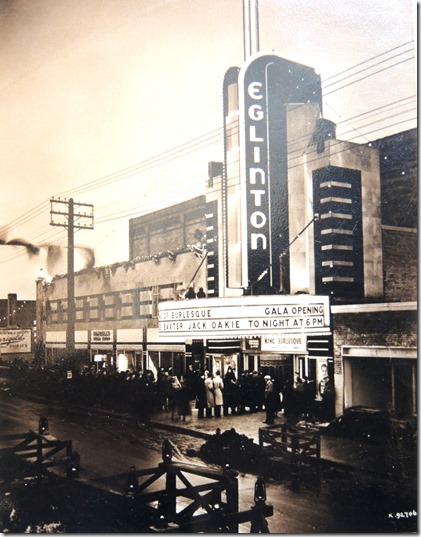
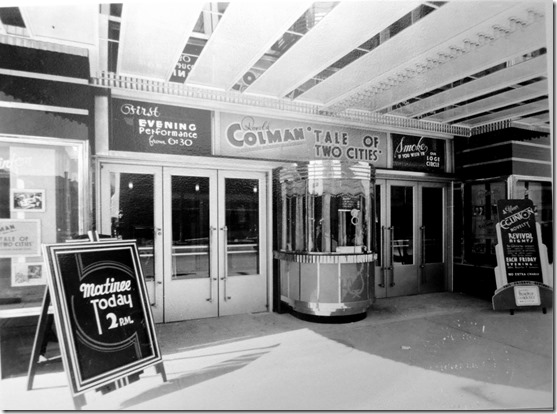
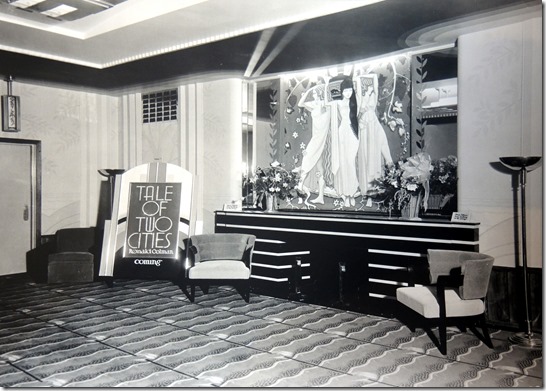
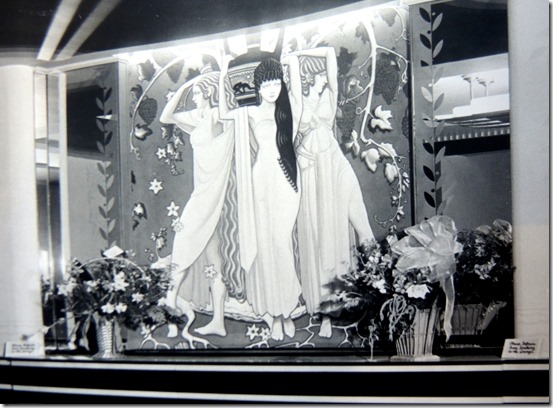
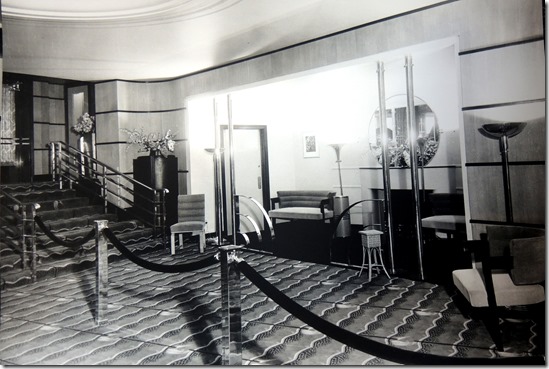
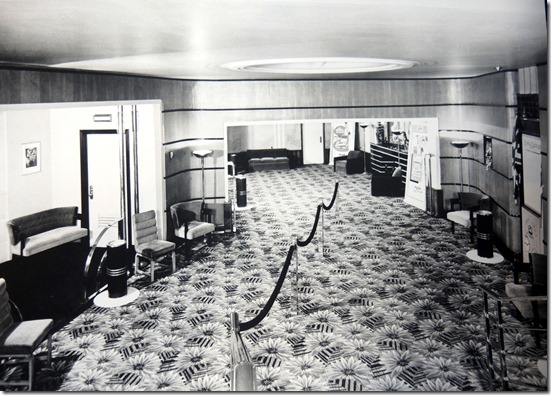
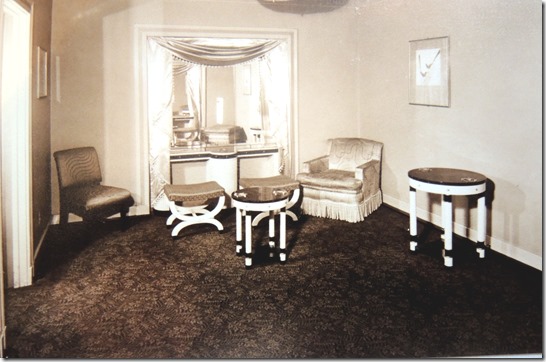
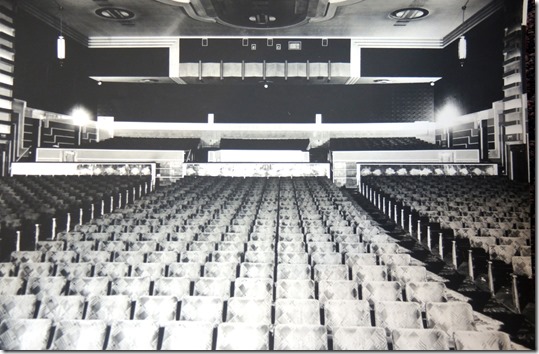
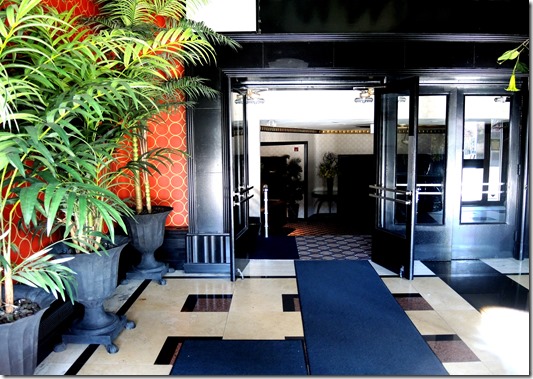
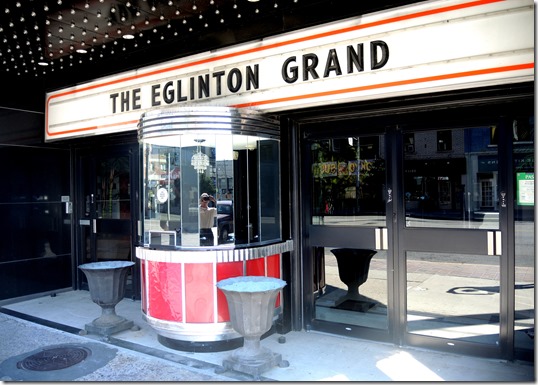
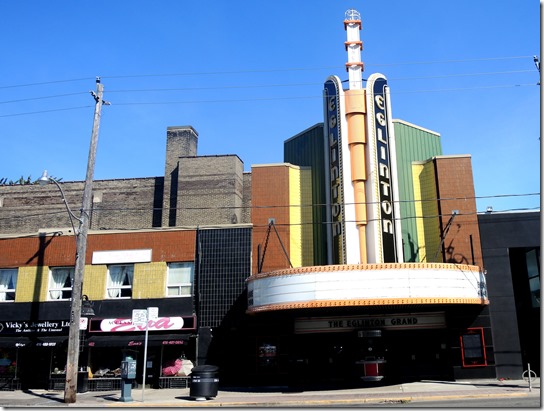
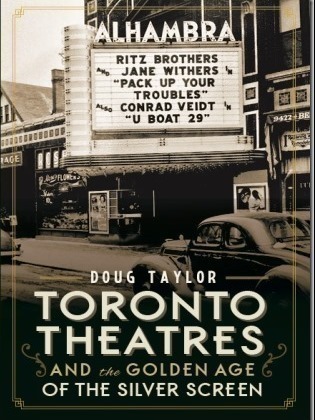


One thought on “Toronto’s old Eglinton Theatre—Part II”